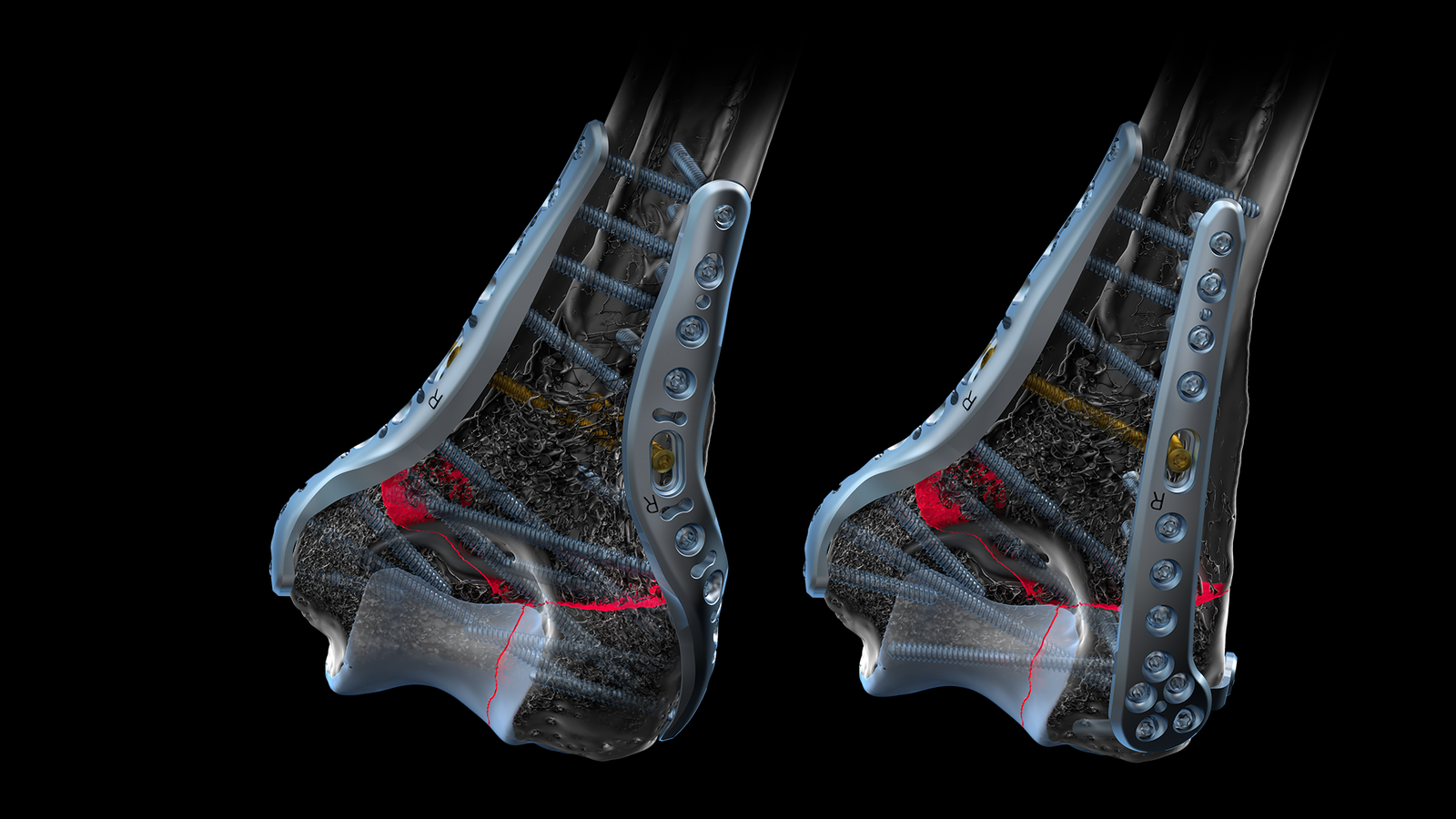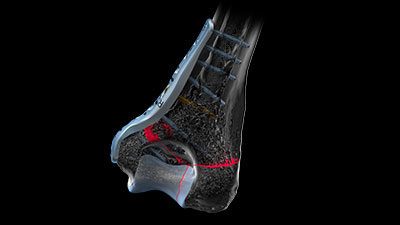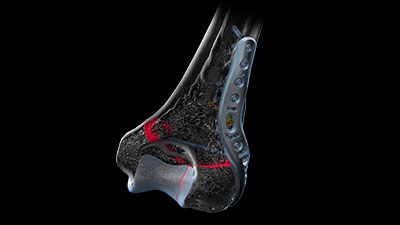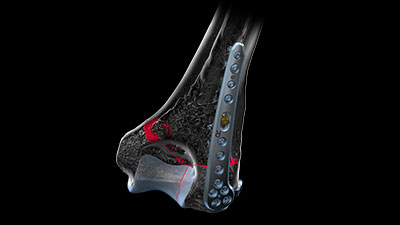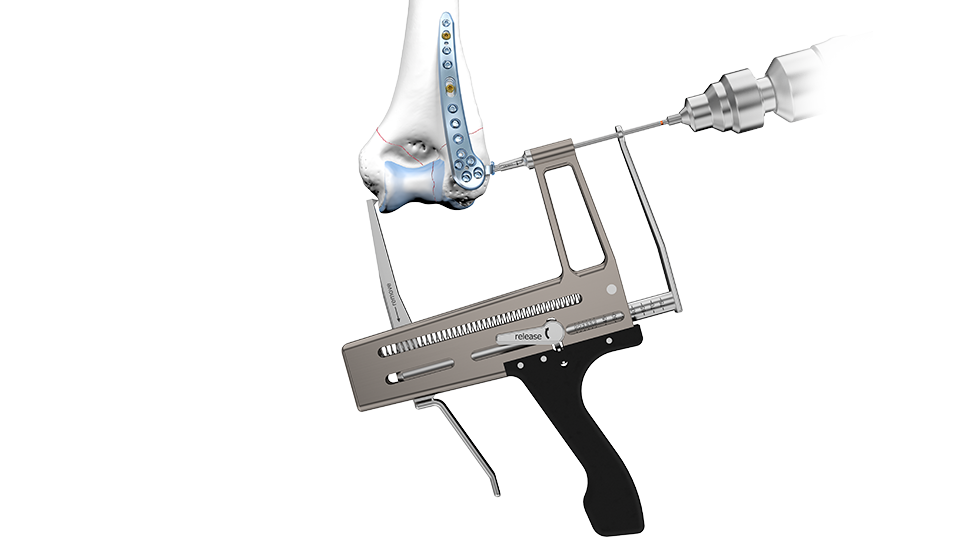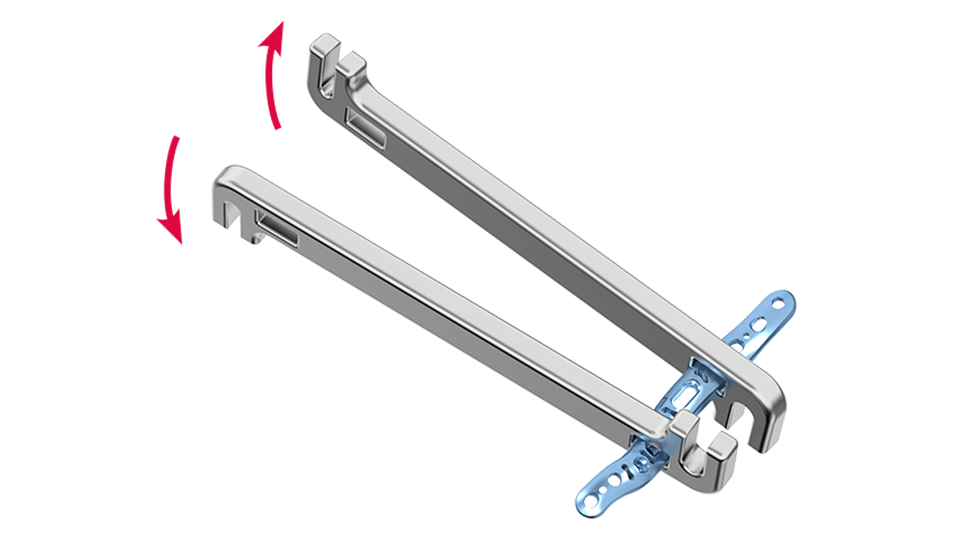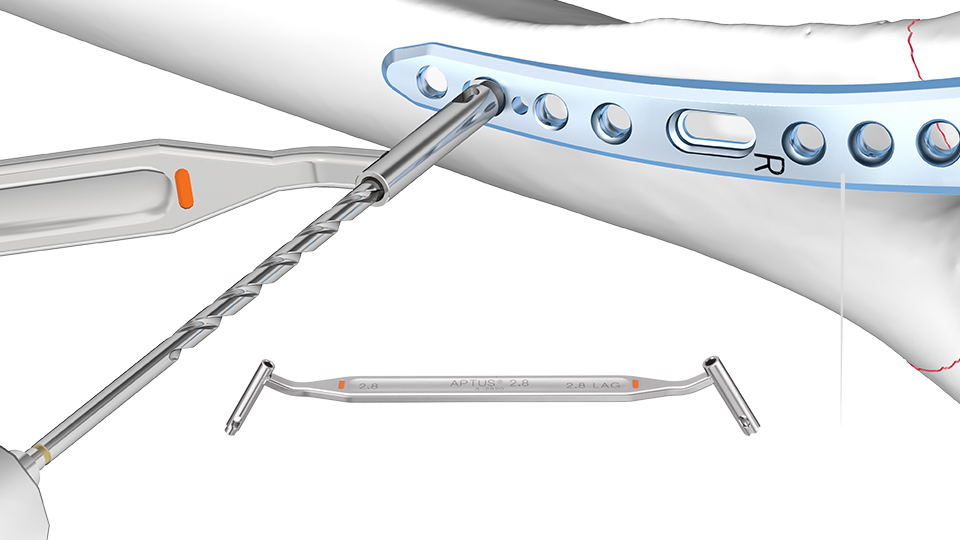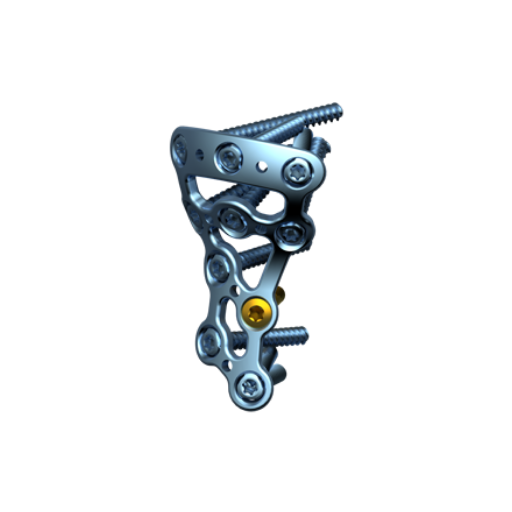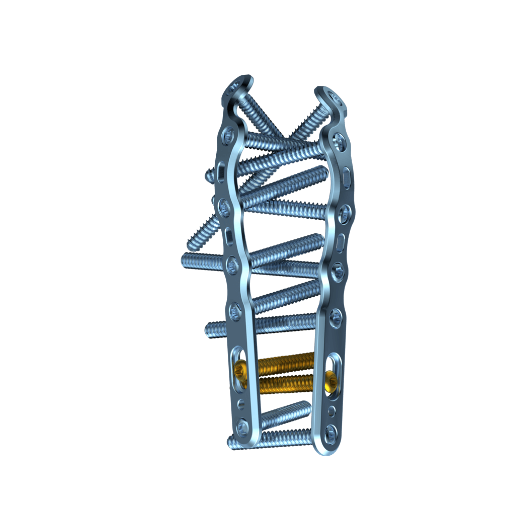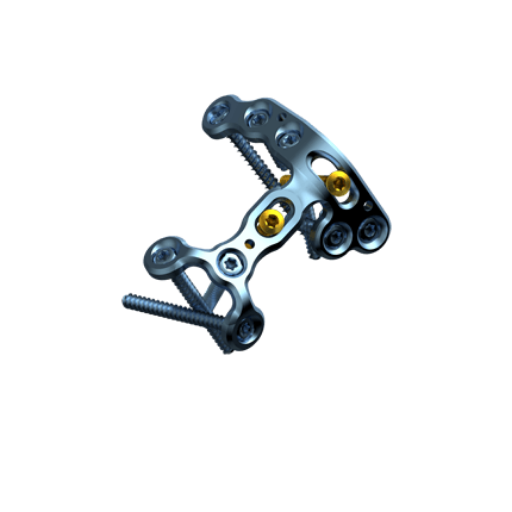Designed to Perform
The elbow is a complex joint with several articulating surfaces where the humerus, the radius and the ulna meet. Stability is achieved by a high number of ligaments and muscles attaching at the elbow. Fractures caused by direct or indirect trauma are quite frequent and often intra-articular. They may involve several bones and are frequently associated with ligamental injuries. In these cases, the restoration of the initial function of the articulation is very challenging.
Plate Options
Three plate types are available for the fixation of distal humerus fractures. They allow, especially for complex fractures, pairwise positioning in either a 90° or 180° configuration. The three-dimensional plate shapes are based on comprehensive anatomical analyses for a good fit to the bone. [1] The thickness of the plates tapers off at the ends to reduce plate protrusion over the epicondyles distally and reduce the risk of stress fractures proximally. The innovative plate designs enable long transcondylar screws as well as bicortical screw placement proximally in both the 180° and the 90° configuration.
[1] K. Wegmann, K.J. Burkhart, J. Zimmermann, J. Dargel, S. Nijs, M.A. Konerding, L.P. Müller, «The interference of distal humeral plating with the medial and lateral collateral ligaments of the elbow», Arch Orthop Trauma Surg, 2014, 134; P501-507
TriLock Medial Distal Humerus Plates 2.8
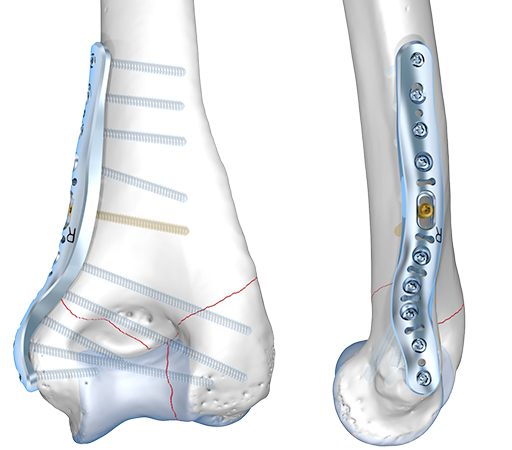
Highlights
-
Concave milling of the medial plate reduces its protrusion over the medial epicondyle [1]
-
A slight recess in anterior direction distally lowers the risk of contact between the ulnar nerve and the plate
TriLock Lateral Distal Humerus Plates 2.8
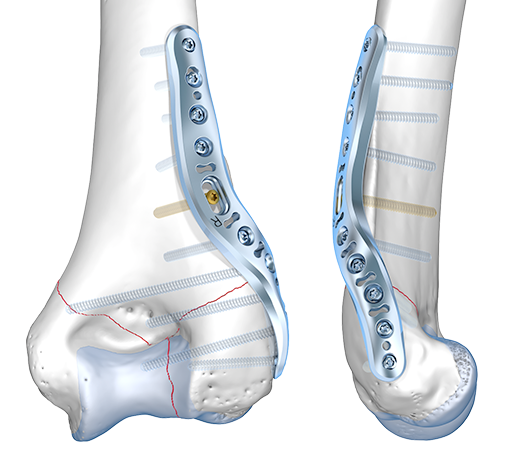
Highlights
-
The twisted plate shape reduces the necessary soft tissue detachment in the proximal area and may lessen postoperative soft tissue irritations [2]
-
Proximal screws can be placed bicortically distally even in the 180° configuration
[2] M. Crönlein, M. lUCKE, M. Beirer, F.B. Imhoff, D. Pförringer, C. Kirchhoff, P. Biberthaler, K.F. Braun, S. Siebenlist, «Polyaxial locking plates in treating distal humeral fractures: a comparative randomized trial for clinical outcome», BMC Musculoskeletal Disorders, 2017. 18:547
TriLock Posterolateral Distal Humerus Plates 2.8
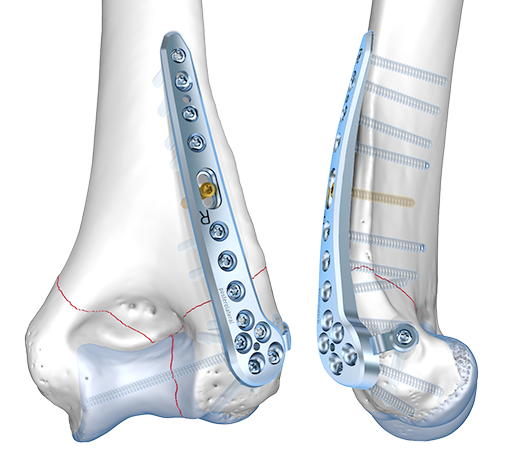
Highlights
-
Additional stability through two transcondylar screws connected via a flap to the plate
-
The two most distal screw holes in the plate are preangled to capture distal shear fragments of the capitellum
Technological Milestones in Osteosynthesis
TriLock
Multidirectional and angular stable locking, screws can pivot freely by ± 15° in all directions
TriLockPLUS
TriLockPLUS screw holes offer the advantage of locking and compression in one step
HexaDrive
Simplified screw pick-up due to self-holding system
Designed to Organize
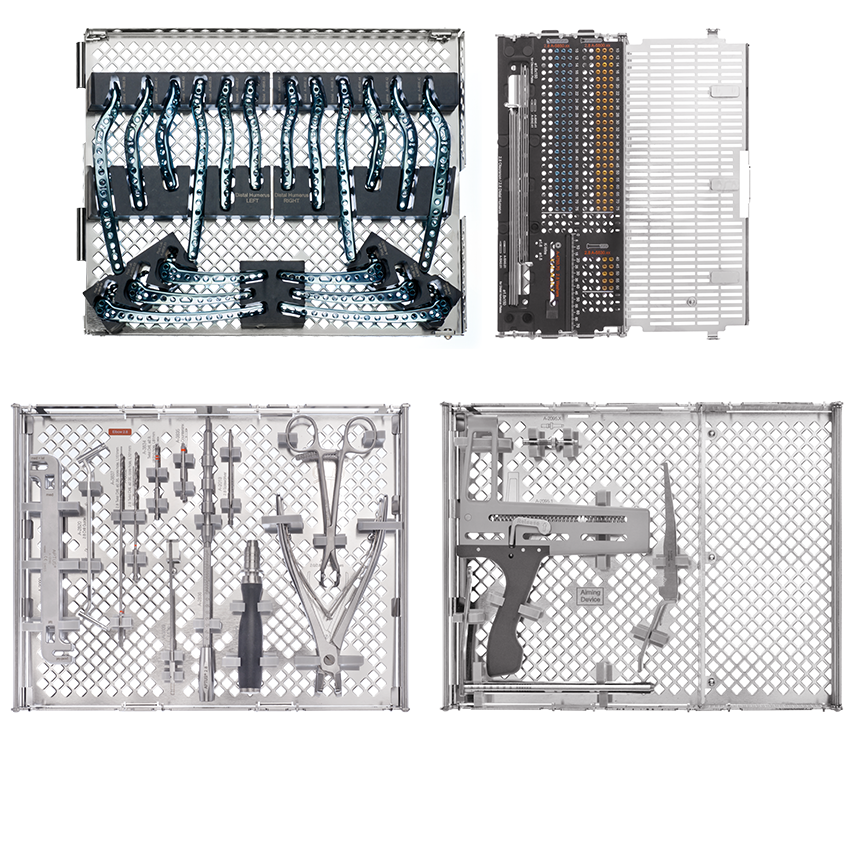
- Part of the modular APTUS Elbow System 2.0, 2.8
- Economic and compact system
- Easy handling
- Clear identification and storage of implants and instruments
Documentation
Results
- Elbow System 2.0, 2.8 – Surgical Technique 22.01.2024 7 MB Surgical Technique Upper Extremities English
- APTUS Ordering Catalog/Bestellkatalog/Catalogue (High Resolution) (Version 0, MDR) 18.01.2024 22 MB Ordering Catalog Upper Extremities English
- APTUS Ordering Catalog/Bestellkatalog/Catalogue (Low Resolution) (Version 0, MDR) 18.01.2024 16 MB Ordering Catalog Upper Extremities English
- Distal Humerus Plates – White paper 18.01.2024 1 MB White paper Upper Extremities English

